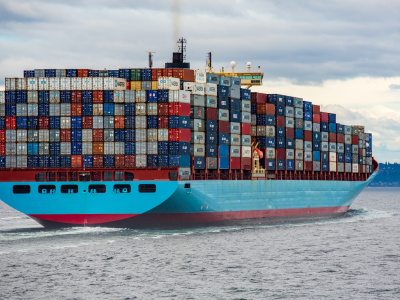
Trade preferences need predictability
Many developing countries export their products to the European Union (EU) at reduced tariffs. But these preferential market access conditions can be withdrawn, which can discourage trade. Removing the Damocles sword of continued uncertainty can lead to substantially more trade.
Most industrialised countries offer developing countries preferential market access under so-called Generalised System of Preferences (GSP) schemes. In doing so, their overarching aim has always been to facilitate export-led growth. GSP recipients benefit from tariffs lower than Most-Favoured-Nation rates. In fact, tariffs are often reduced to zero. There is evidence that awarding non-reciprocal trade preferences can boost exports from eligible countries (Frazer and Van Biesebroeck 2010).
Yet a significant flaw of GSP schemes is that preferential tariffs are uncertain. GSP schemes are offered on a temporary basis, and some schemes have built-in mechanisms to remove preferences from countries or sectors that become internationally competitive. The uncertainty that characterises GSP-style preferences is likely to undermine the development scope and effectiveness of GSP schemes. Concerns have been reinforced by growing empirical evidence that uncertainty about future trade policy might act as a break on international trade. Handley and Limão (2017), for example, showed that elimination of trade policy uncertainty explained much of the increase in China’s exports following its WTO accession.
The 2014 reform of the EU GSP
The EU’s GSP regime establishes that a beneficiary whose exports become ‘too competitive’ will no longer be in need of a preferential tariff and therefore loses its GSP membership (so-called ‘graduation’). Competitiveness is determined by the share of EU imports from a country in a particular sector, relative to total EU imports from all GSP countries in that sector. Thresholds determine when GSP status is lost. The threshold was originally set at 15% (12.5% for textiles). It was revised upwards in 2014 to 17.5% (15% for textiles) and raised again to 57% (47.5% for textiles) in 2015 when large beneficiaries, including China, exited from the scheme.
The threat of preference removal may act as a barrier, deflecting trade from GSP beneficiaries away from the threshold. Removing the uncertainty of GSP preferences could lead to increased trade with beneficiary countries (Borchert and Di Ubaldo 2020). We had the opportunity to observe this effect in 2014, when the EU eliminated the threat of competitiveness-related graduation for the so-called GSP+ members. This rule change meant that GSP+ countries would henceforth be certain of their preferential access to the EU market, regardless of the size of their exports relative to those of other members.
Looking at the trade performance of GSP+ countries, we find that the 2014 reform led to an increase in EU imports by 46% from these economies relative to all other countries that were unaffected by the reform. Since we can exclude the effect of all other conceivable changes in market access conditions, including changes in preferential tariff margins, it is very plausible that the trade growth observed after the reform is attributable to the removal of uncertainty.
Sectors where import shares are close to the graduation threshold are arguably more directly affected by uncertainty about future tariffs, as they are just a few steps away from the ‘cliff edge’. Firms in developing countries from these sectors might hold back export growth to eschew graduation. Indeed, we found that imports from country-sector pairs closer to the threshold (within 7.5 percentage points) increased by nearly 70% after the reform, which is appreciably higher than the average impact of 46%.
The cheer over the post-reform boost in trade would be tarnished if the increase in exports to the EU came at the expense of other export destinations, representing merely a diversion of trade. Yet we found no evidence of beneficiaries simply having redirected exports from alternate destinations to the EU. Rather, GSP+ countries appear to have taken advantage of their more secure access to EU markets by increasing their overall export activity.
What if…?
Based on the impact of the 2014 reform on GSP+ countries, one might wonder whether countries in the standard GSP scheme, which are still subject to preference uncertainty, would equally benefit from uncertainty removal. An illustrative example is India, which is currently the largest beneficiary in the standard GSP programme. Figure 1 shows the shares of EU imports from India in four main sectors from 2004 to 2013. Though India’s import shares grew over time, they remained just below the 15% threshold which would have triggered graduation. India was not affected by the 2014 reform. However, given our findings for GSP+ countries, India and other standard GSP beneficiaries could benefit a great deal from uncertainty removal.
Figure 1. EU Import shares from India by top sectors, 2003-2014

Conclusion and implications
Trade policy uncertainty can adversely affect trade flows. For exporters in developing countries to take full advantage of the benefits of non-reciprocal preference schemes, they need a sufficiently high degree of predictability in trading conditions going forward.
This research is part of the ongoing RESPECT project (‘RESPECT’ stands for Realising Europe’s Soft Power in External Cooperation and Trade). Our aim was to shed light on one of the project’s overarching objectives, namely, to identify success factors for effective EU external policies and to better realise the EU’s trade and development strategy. Based on our results, we conjecture that recipients of trade preferences would benefit from further reform that eliminates discretionary elements from GSP schemes.
References
Borchert, I. and Di Ubaldo, M. 2020. Go ahead and trade: The effect of uncertainty removal in the EU’s GSP scheme. Working Paper 0520. Sussex: Department of Economics, University of Sussex Business School.
Frazer, G. and Van Biesebroeck, J. 2010. Trade growth under the African Growth and Opportunity Act. The Review of Economics and Statistics, 92(1): 128-144.
Handley, K. and Limão, N. 2017. Policy uncertainty, trade, and welfare: Theory and evidence for China and the United States. American Economic Review, 107(9): 2731-2783.
About the authors
Dr Ingo Borchert, Senior Lecturer in Economics, University of Sussex Business School and Fellow of the UK Trade Policy Observatory (UKTPO)
Mattia Di Ubaldo, Research Fellow, University of Sussex Business School; Fellow of the UK Trade Policy Observatory (UKTPO).
Read the full magazine issue





